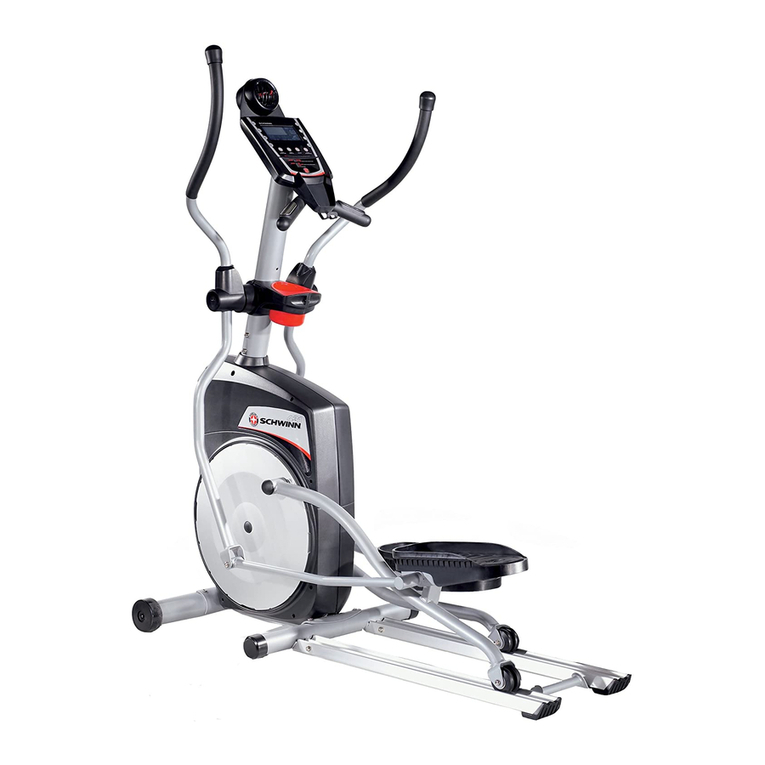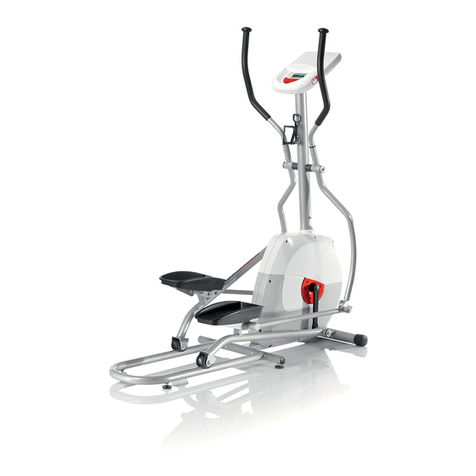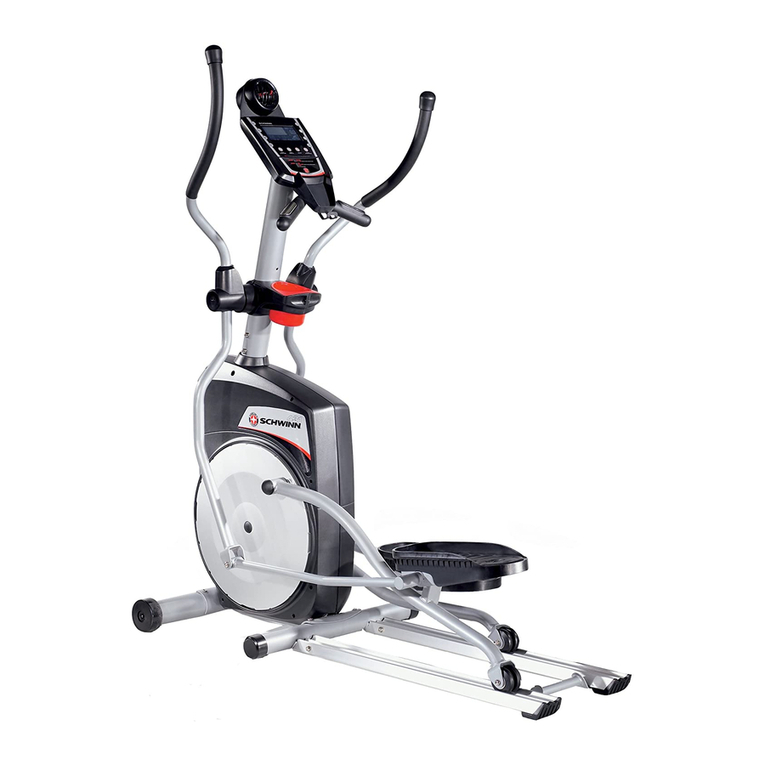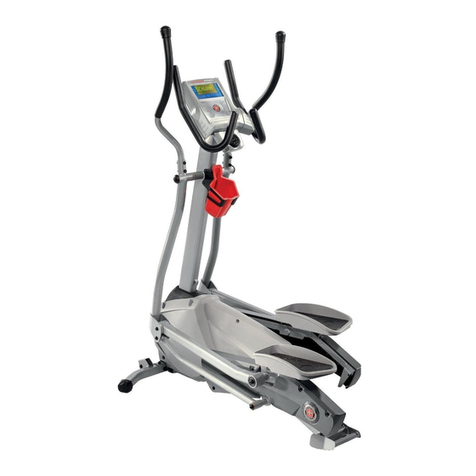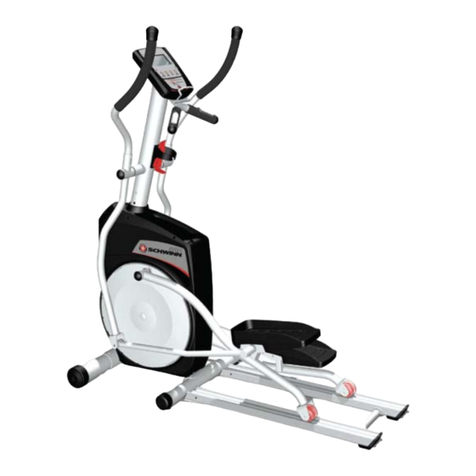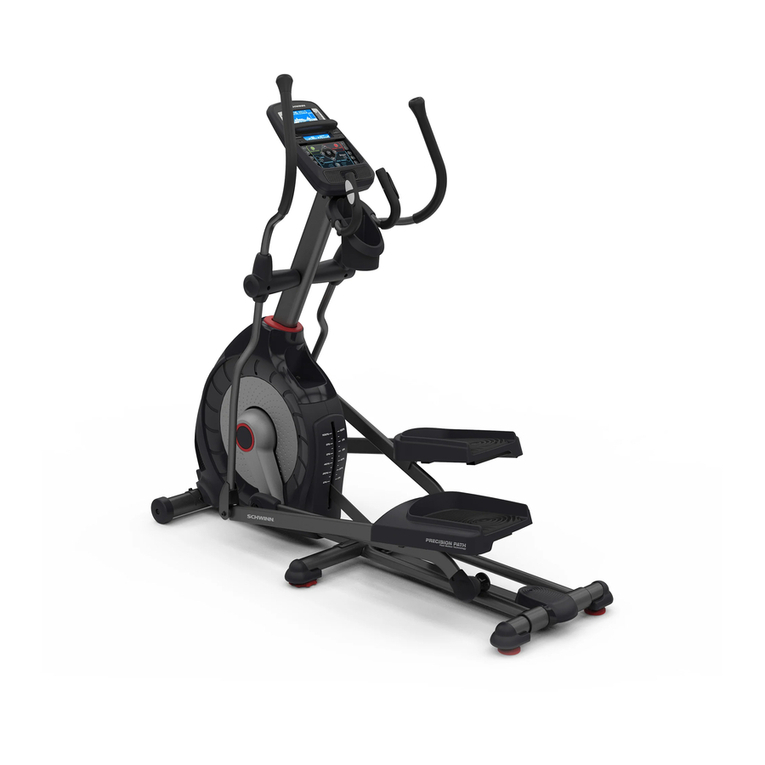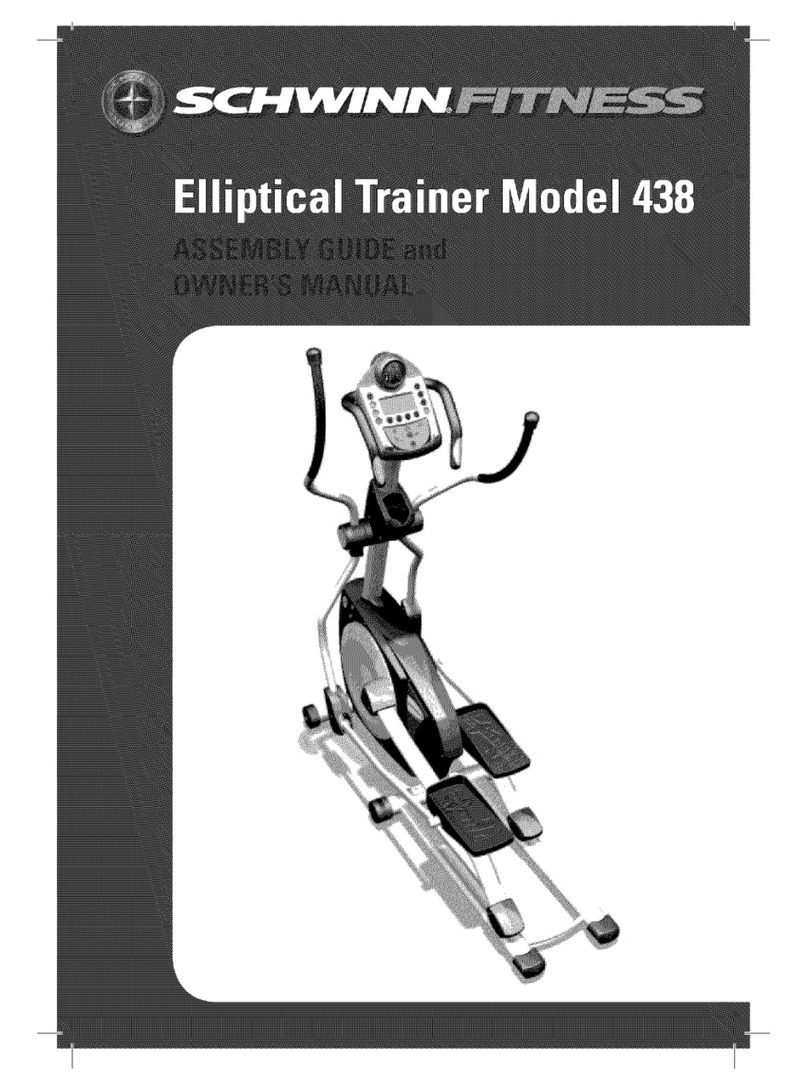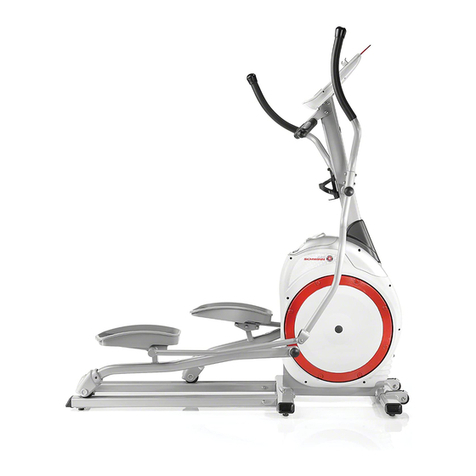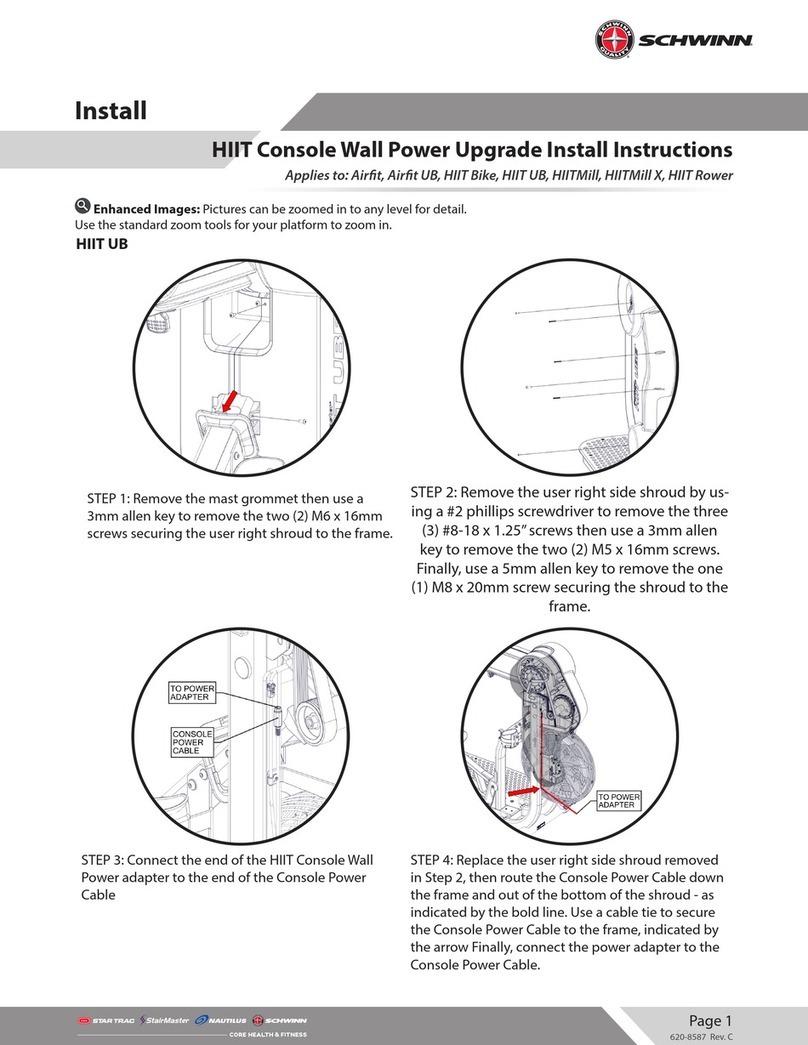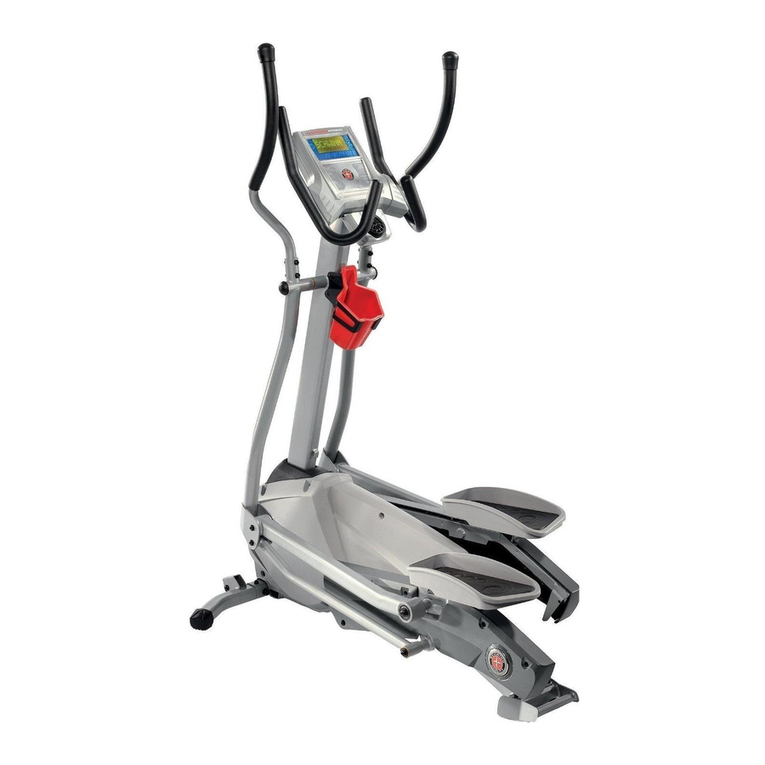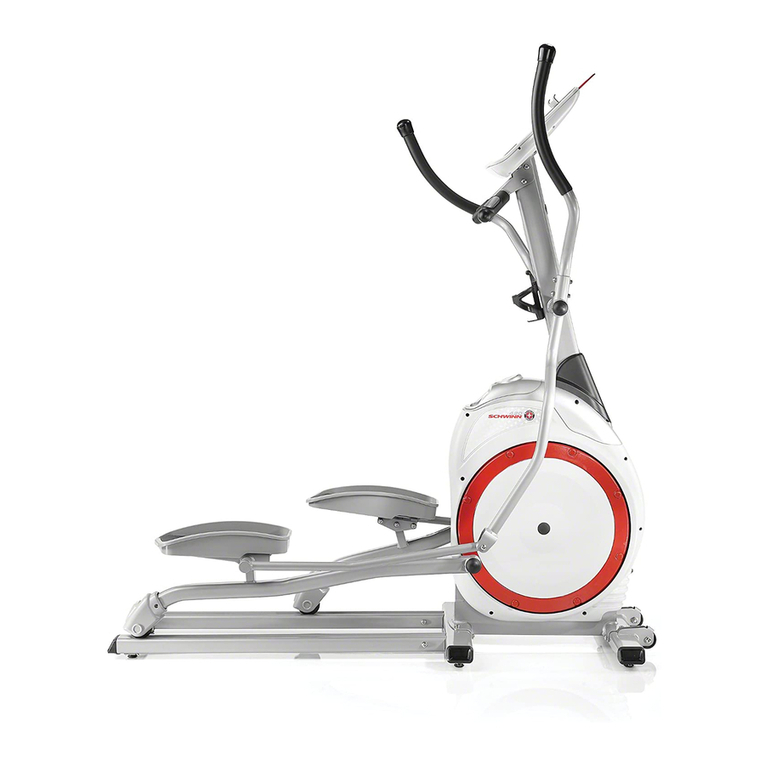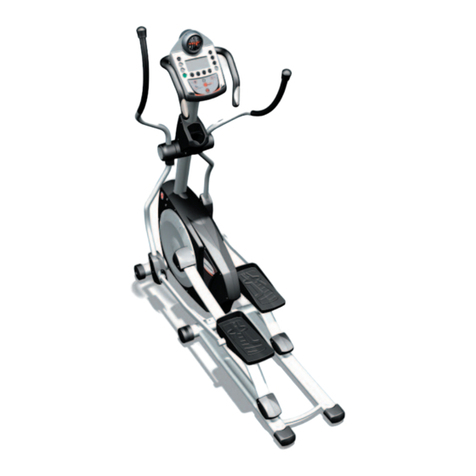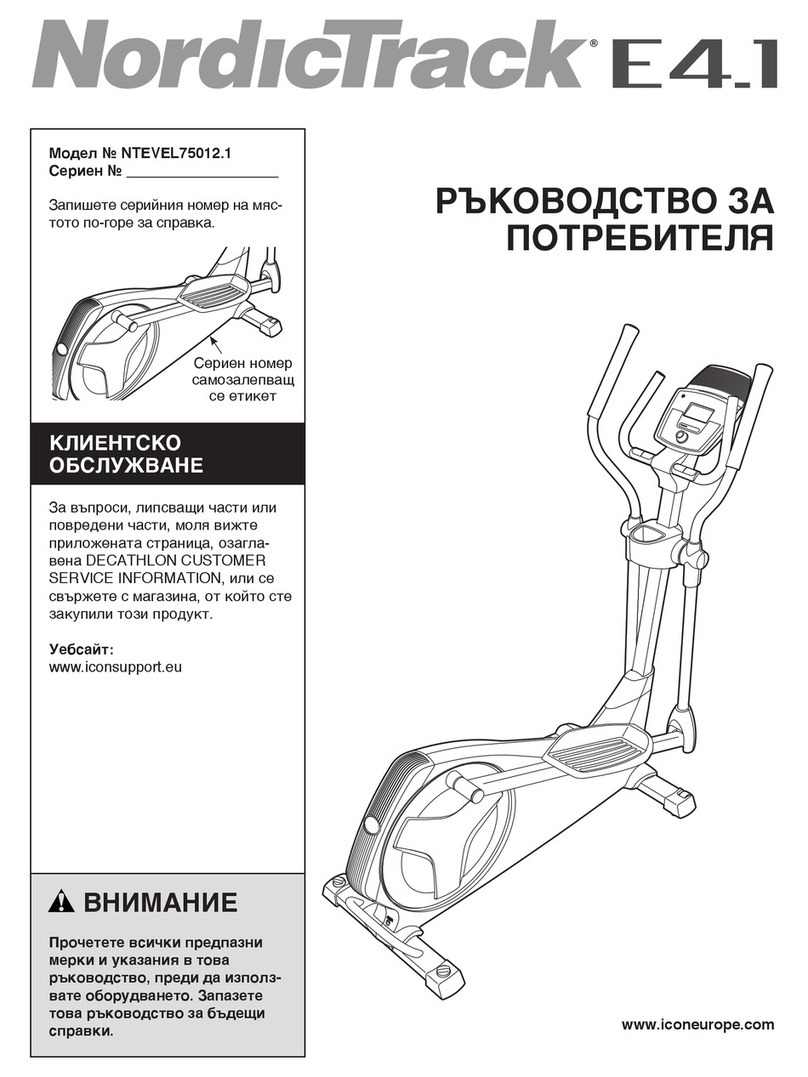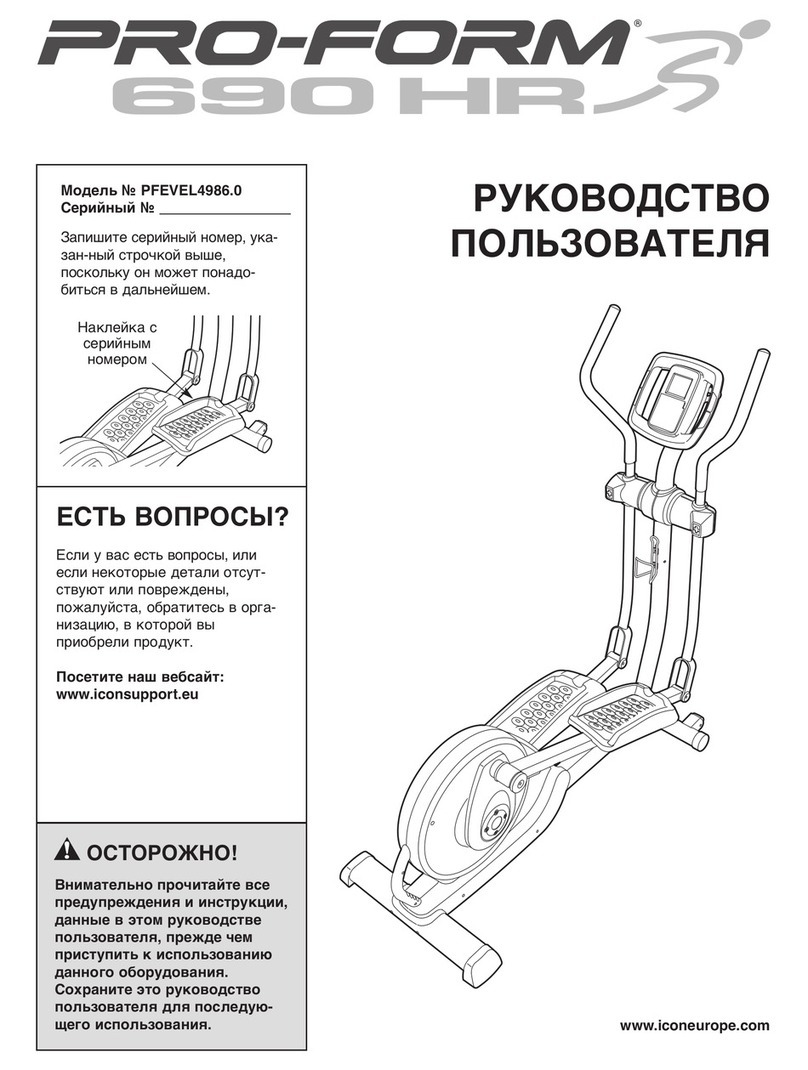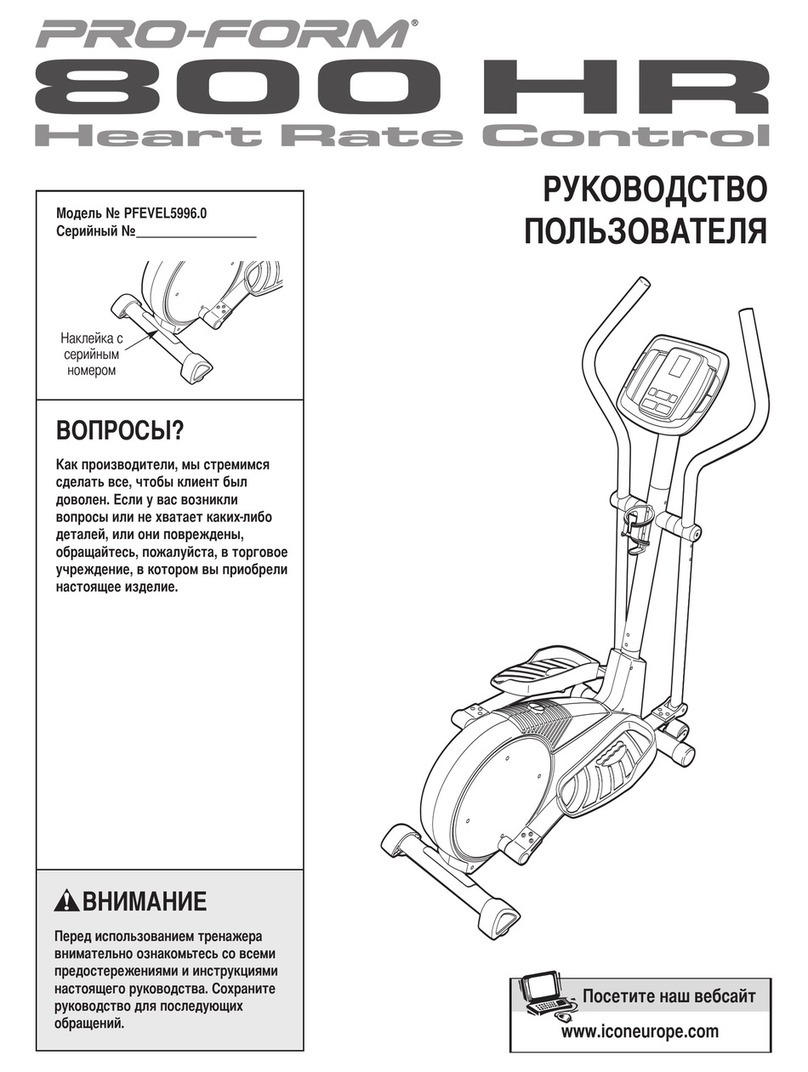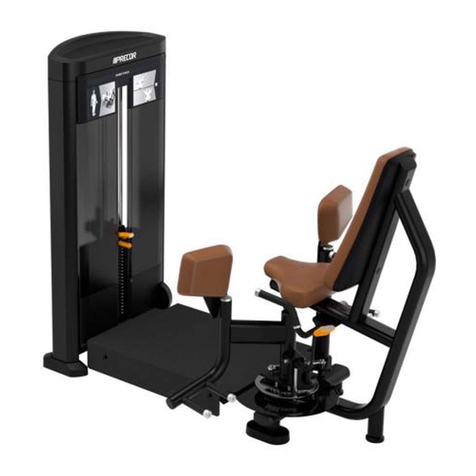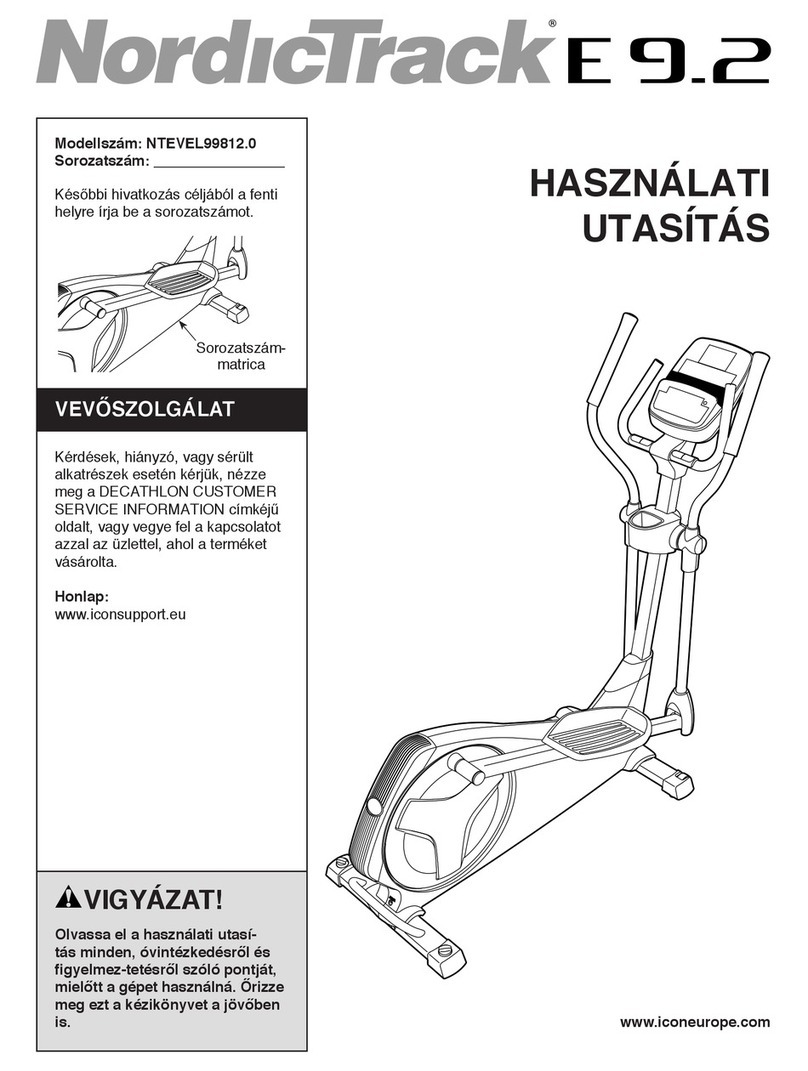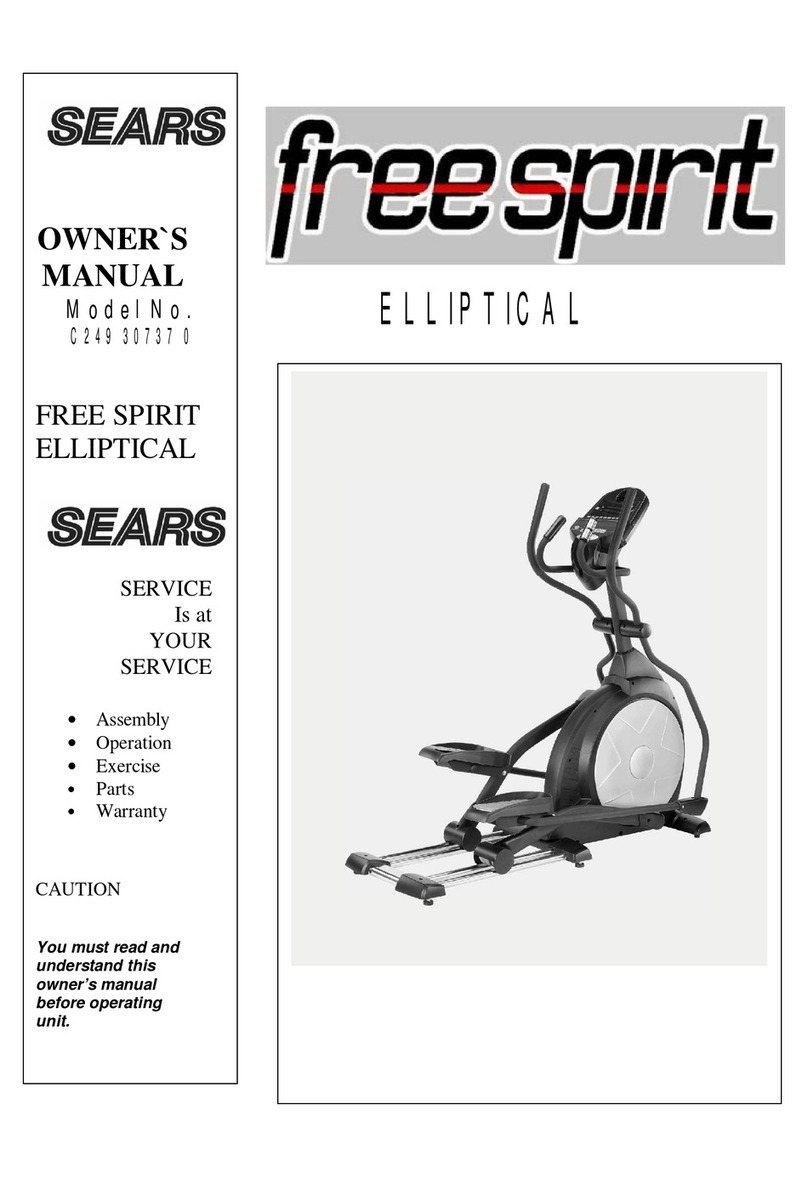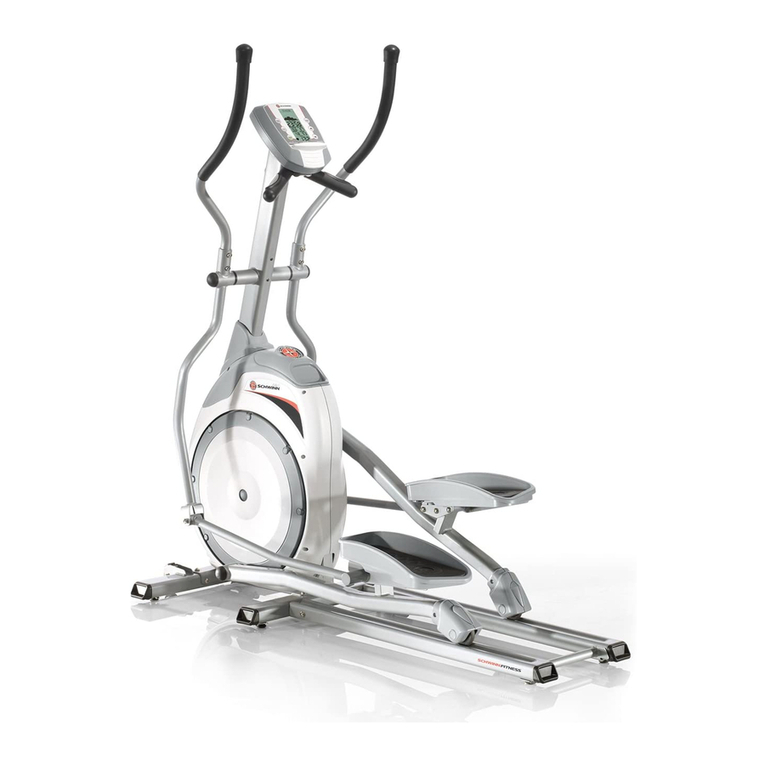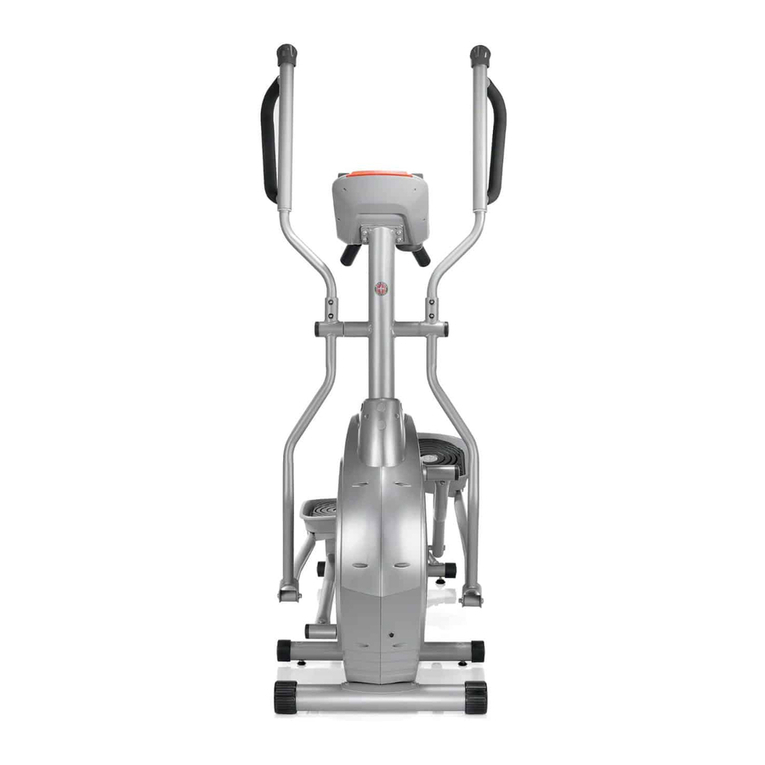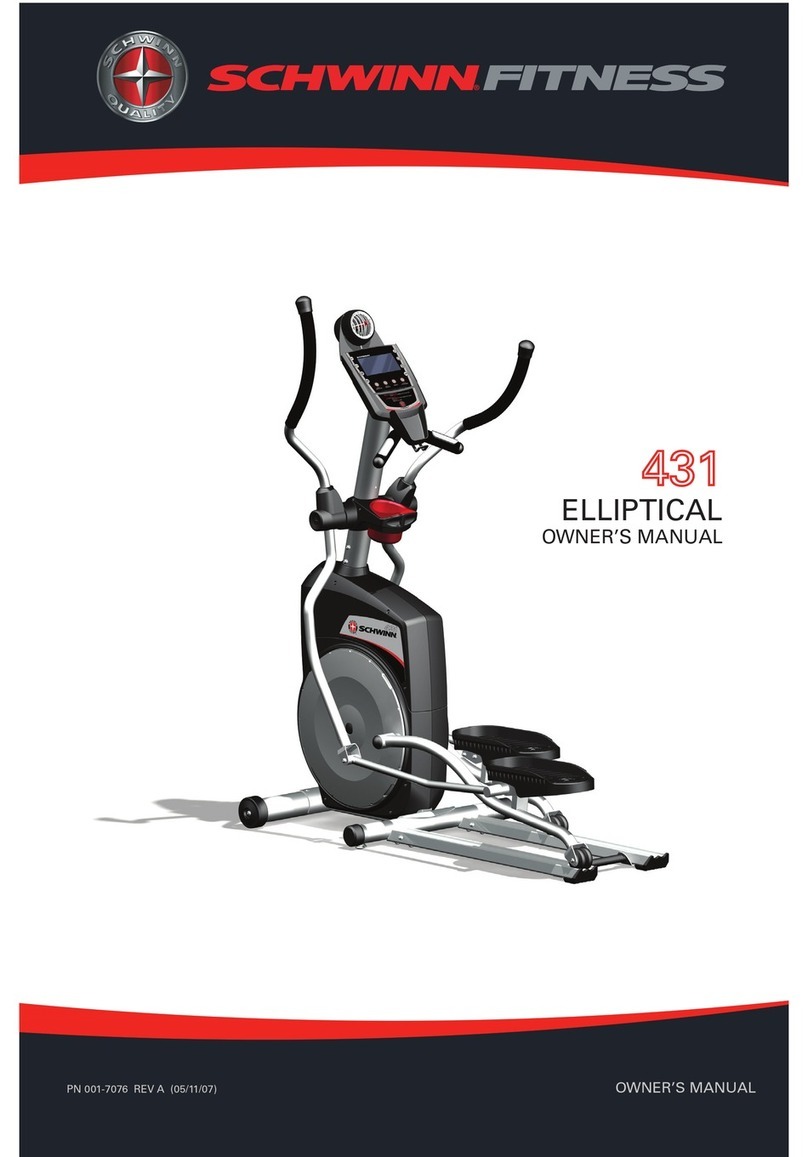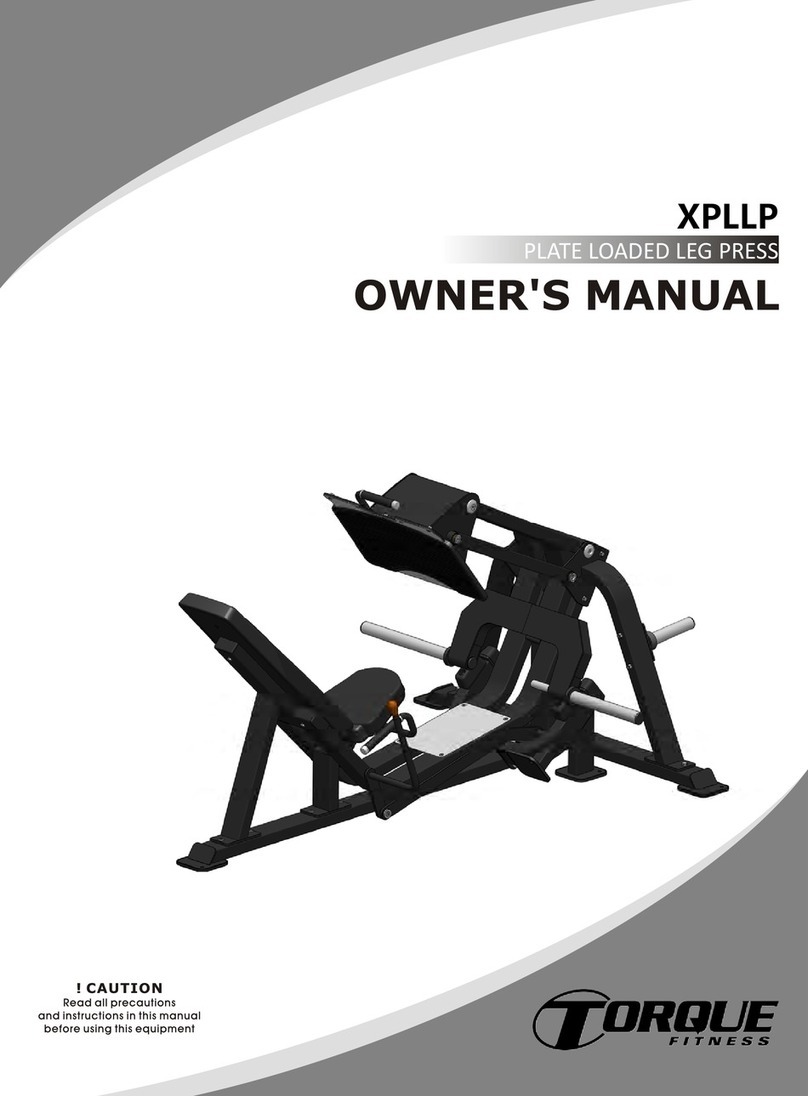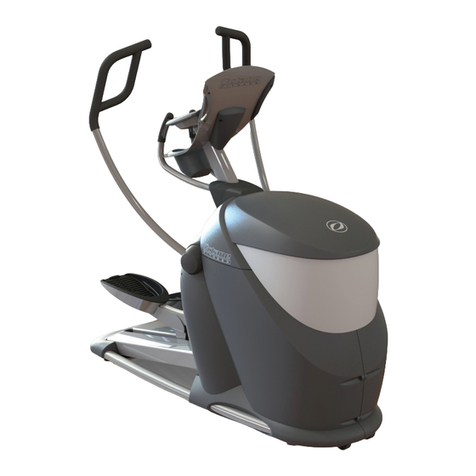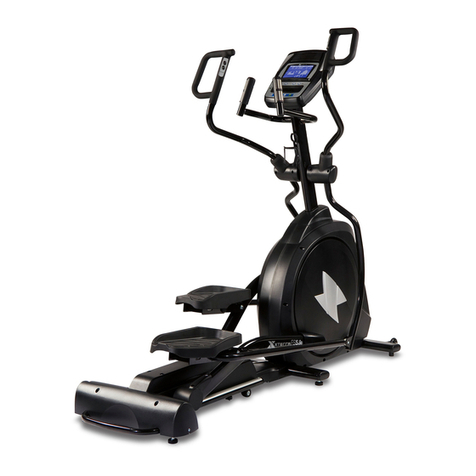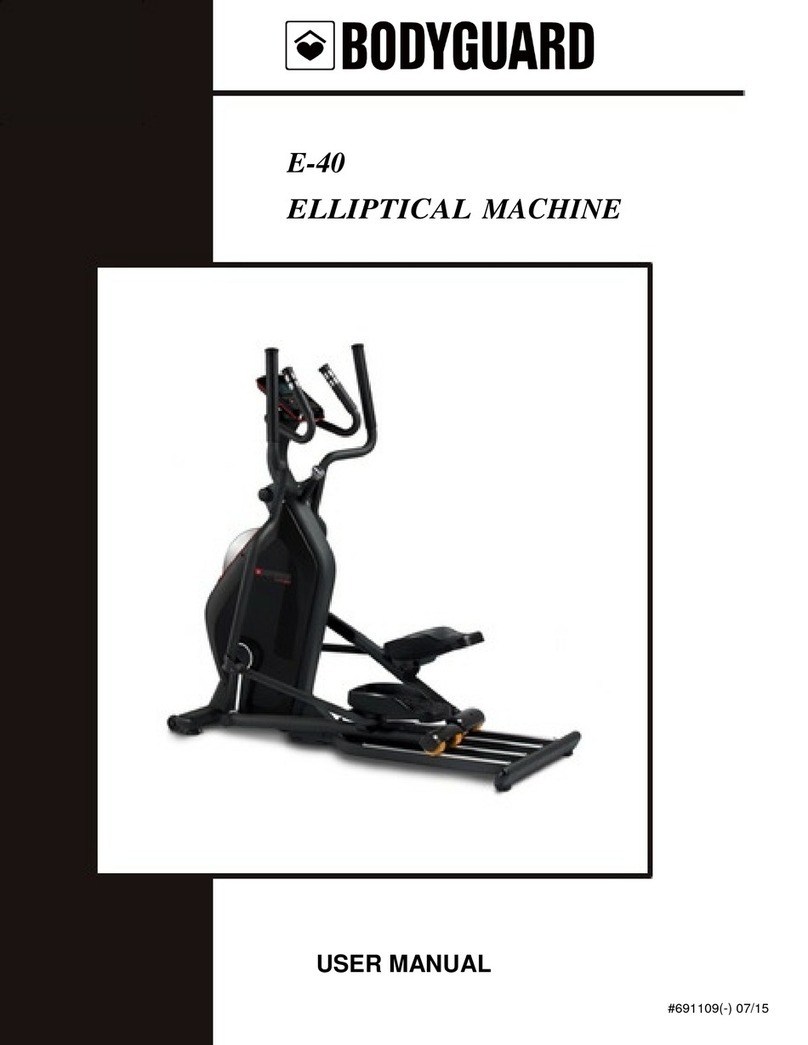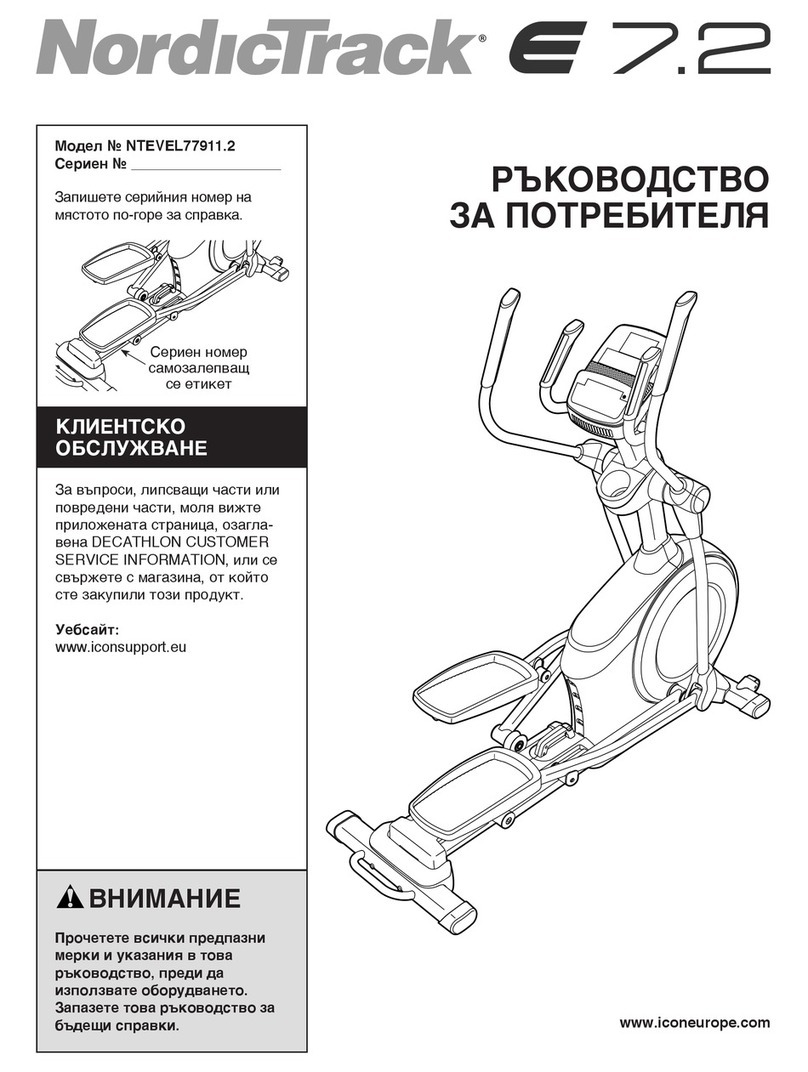
•Reorient or relocate the receiving antenna.
•Increase the separation between the equipment and receiver.
•Connect the equipment into an outlet on a circuit different from that to which the receiver is connected.
Consult the dealer or an experienced radio/TV technician for help.
Contact Heart Rate Sensors
ContactHeartRate(CHR)sensorssendyourheart ratesignalstothe Console.TheCHRsensorsarethestainlesssteelpartsonthe handlebarsorthe sidesofthe Console.
Touse,putyourhandscomfortablyaroundthesensors.Besurethatyourhandstouchboththe topandthe bottomofthe sensors.Holdfirm,but nottootight or loose.Both
handsmustmakecontactwith the sensorsfor theConsoleto detectapulse.After theConsoledetectsfourstablepulsesignals,yourinitial pulseratewill beshown.
OncetheConsolehasyourinitial heartrate,donot moveor shiftyourhandsfor 10to 15seconds.TheConsolewill nowvalidatetheheart rate.Manyfactorsinfluencethe
ability of the sensorsto detectyourheart ratesignal:
°Movementofthe upperbodymuscles(includingarms)producesanelectricalsignal(muscleartifact)that caninterferewith pulsedetection.Slighthandmovementwhile
in contactwith the sensorscanalsoproduceinterference.
•Callusesand handlotionmayactas aninsulatinglayerto reducethe signalstrength.
•SomeElectrocardiogram(EKG)signalsgeneratedby individualsarenot strongenoughto bedetectedby thesensors.
Ifyourheartratesignaleverseemserraticafter validation,wipe off yourhandsandthe sensorsandtry again.
Heart Rate Calculations
Yourmaximumheartrateusuallydecreasesfrom 220BeatsPerMinute(BPM)inchildhoodto approximately160BPMbyage60. Thisfall in heart rateisusuallylinear,
decreasingbyapproximatelyoneBPMfor eachyear.Thereisno indicationthat traininginfluencesthe decreasein maximumheartrate. Individualsofthe sameagecould
havedifferentmaximumheart rates.It ismoreaccurateto findthis valueby gettinga stresstestthanby usinganage relatedformula.
Yourat restheart rateis influencedbyendurancetraining. Thetypicaladulthasanat restheart rateof approximately72 BPM,whereas highlytrained runnersmay
havereadingsof 40 BPMor lower.
TheHeartRatetable isanestimateofwhat HeartRateZone(HRZ)iseffectiveto burnfat andbetteryourcardiovascularsystem.Physicalconditionsvary,therefore
yourindividualHRZcouldbeseveralbeatshigheror lowerthanwhat is shown.
Themostefficientprocedureto burnfat duringexerciseisto startat aslowpaceandgraduallyincreaseyourintensityuntilyourheartratereachesbetween60 85%
of yourmaximumheartrate. Continueatthat pace,keepingyourheartratein that targetzonefor over20minutes.Thelongeryoumaintainyourtarget heartrate,the
morefat yourbodywill burn.
Thegraphis a briefguideline,describingthegenerallysuggestedtarget heartratesbasedonage.As notedabove,youroptimaltargetrate maybehigheror lower.
Consultyourphysicianforyourindividualtargetheartratezone.
Note: Aswith all exercisesandfitness regimens,alwaysuseyourbestjudgmentwhenyouincreaseyourexercisetimeor intensity.
Fat Burning Target Heart Rate
Heart Rate BPM (beats
per minute) 250
Maximum Heart Rate o
Target Heart Rate Zone
(keepwithin thisrangefor
optimumfat burning)
200
150
100
5O
0
196 191 -_
'a- 181 _
i•_o 17!
167 _ • • A 166 !61 -
- _ Joz 158 154 • • • "lbb 151 .-_
160 • i4b
.... ] 14b 141 137 - •
133 128 -
12b
118 115 112 109 1- " 103 ...._ --
uu 97 94 91 88
20-24 25-29 30-34 35-39 40-44 45-49 50-54 55-59 60-64 65-69 70+
Age



